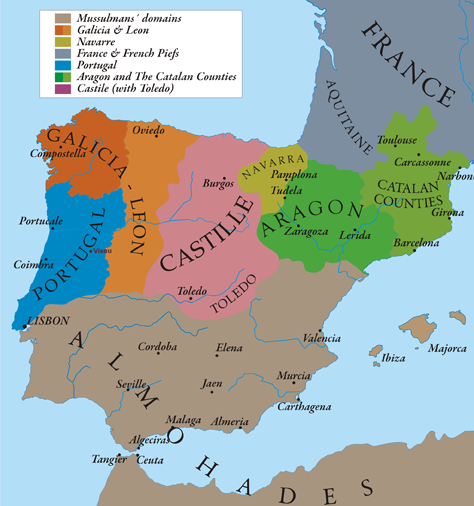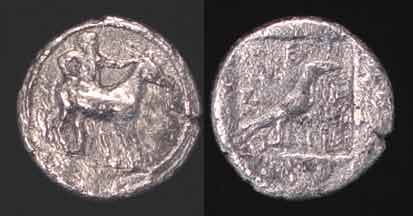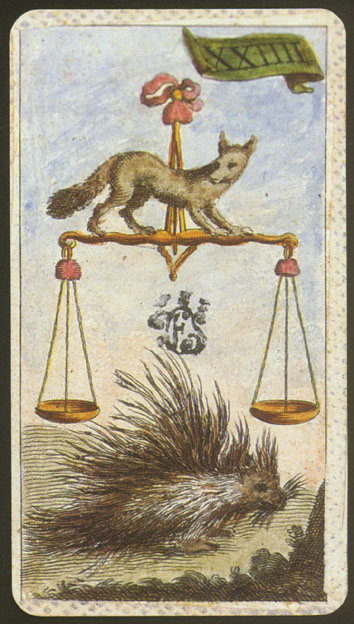This is an unfinished post I'd in work the last days, the research is proceeding ...
************************************
A further system is inside the lot book, which I ignored at the beginning. It's inside the search system, "how you get an answer". This part is given at Folio 3 and starts with ...
David 1 [figure 1 = Libra, David]
In Mercurius Land
findst Du Norden zu hand
["in Mercurius' country
you find North 'zu hand'"]
.. so for each figure are added a direction (1 ... North etc.) and one of the 7 "planets" (2). The form of the sentence repeats occasionally and occasionally differs ... if this is latter quality is "just accident" or further "system information" I can't decide for the moment.
Anyway, I would see, that this latter part has good chances to be "corrupted text", so I ignore it for the moment. The direction (1) and the additional planet attribute present some system, so this part one should consider as "system-information".
********************************
According this we have (I ignore the direction for the moment) ...
Zodiac-zone
**************
1. Mercury - Libra
2. Mercury - Aries
3. Jupiter - Taurus
4. Jupiter - Cancer
5. Mercury - Leo
---------
6. Mercury - Raven
----------------------
7. Jupiter - Virgo
8. Venus - Pisces
9. Mars - Aquarius
10. Jupiter - Gemini
11. Mars - Sagitarius
12. Mars - Scorpio
13. Mars - Capricornus
Birds-zone
************
14. Venus - Crane
15. Sun - Eagle
16. Venus - Nightingale
17. Venus - Camel
18. Moon - Parrot
Top-zone
***********
19. Saturn - Stag
20. Saturn - Dog
21. Saturn - Hare
22. Saturn - Donkey
How to understand this? First we learn, that any of the 5 planets has 4 appearances ... but moon (18) and sun (15) has only one (5x4 + 1 + 1 = 22) . The 4 appearances are in each case of the 5 "real planets" North-East-South-West. Sun gets only "North-East" and Moon gets only "South-East" (neither North-West nor South-West is used as direction in this system).
Here we meet the first curiosity: Sun has the number 15 and Moon has the number 18 in this new reflected system ... and sun has the number 15 and Moon the number 18 ALSO in the Splendor Solis ...
I remind to the structure Splendor Solis, earlier reflected ...
1-11 .. difficult pictures, which irgnored the zodiac idea
12-18 .. 7 planets according the rather common Chaldean row with
... 12 Saturn
... 13 Jupiter
... 14 Mars
... 15 Sun
... 16 Venus
... 17 Mercury
... 18 Moon
19-22 ... finishing 4 pictures
The earlier conclusion had been, that ...
* first there was 3 rather identical versions of the lot book
* second there was a variation of the other lot book, Trier "Losbuch Moselfranken" with 7 Kurfürsten at positions 12-18
* third there was the Splendor Solis, which seem to have imitated the 7 Kurfürsten (Electors) in the Losbuch Moselfranken
... and now it looks, as if 15 = sun and 18 = moon was directly taken from the original lot book (at least from 1450).
****************
Well, their might be an intentional overlapping of the two rows (the artificial zodiac with its curious twists and the 7 planets).
The curious 13-signs zodiac ends in its lot book row with ...
..
12 Scorpio = usually interpreted as death
13 Capricorn = usually interpreted as birth, as in the "birth of Jesus Christ"
..
and that's the overlapping part (zodiac = 1-13 ... planets 12-18).
The "old man (year) goes", "the new man (year) comes".
Greek mythology is a story of the change of generations, a sort of Oidipus drama ...
Uranos, dethroned by ..
Kronos (Saturn), dethroned by ..
Zeus (Jupiter), NOT dethroned by
Ares (Mars), Zeus' legal son of Hera
and NOT dethroned by
Apollo(= Sun), Zeus' illegal son by Leto
The begin of the Chaldean row (Saturn-Jupiter-Mars-Sun ... ), which is used (as it seems) in lot book and Splendor Solis, displays a part of the genealogical row
In Roman mythology we have Mars becoming the father Romulus and Remus, the twins, which build the city ... for the Roman mythology we have a logical genealogical continuation.
In the Greek version Ares has as most dominant love affair his pairing with Aphrodite, which cheats her Athen husband Hephaistos with the Ares from Theben. The result is mainly "Harmonia", married by the Phoenician Kadmos .. Harmonia has two brothers, "Fear" and "Horror" are their names, they accompany their father in his military escapades.
Theben had been (often) an enemy of Athen, and Athen should be considered relative influential on the development of parts of the Greek mythology.
In the Trojan war Ares and Aphrodite fought on the sides of the Trojans, not at the sides of the Greek. Later with Rome the Greek had a new foe with "Ares-alias-Mars"-mythology.
Rome was relative influential on the later astrology ... planets have Roman names, not Greek names.
****************
The role of Mars shines up, when we return back to the analyzes of the 13-signs zodiac, under the aspect of the fresh imported informations, which I earlier ignored.
According this Mars (the son) reigns in ...
9. Mars - Aquarius
(10. Jupiter - Gemini)
11. Mars - Sagitarius
12. Mars - Scorpio
13. Mars - Capricornus
... in other words, in the whole dark season (winter) from Scorpio - Aquarius
and Jupiter ( a little more complicated) reigns in ...
3. Jupiter - Taurus
4. Jupiter - Cancer
..
7. Jupiter - Virgo
..
10. Jupiter - Gemini
... so Jupiter has a dominance in spring/summer (Taurus till Cancer and then a jump to Virgo)
Jupiter is in this system isolated from his son Mars by Mercury (known for functions of diplomacy, the "peace-making" diplomat) ...
Neither Scorpio (Mars) nor Aquarius (also Mars) have an attachment to Jupiter-reigned signs. If we would simplify the model, we would say, that the whole concepts starts as ...
Mars - Scorpio winter-season till Aquarius
Mercury - two Spring diplomatic months with Pisces+Aries
Jupiter - Taurus summer season till Leo
Mercury - Two autumn diplomatic months with Virgo+Libra
etc.
This would be a very easy and logical way to describe the year with 12 months ... and possibly it existed once (indeed I remember, that there were 2-seasons and 3 seasons-models mentioned somewhere).
However, the 19-years-concept was once invented and created a 13-signs-astrology.
... well, mythology tells, that Kronos took his dangerous tool, and that had a specific effect at the genital of his father, which dropped from above (heaven - the region of the birds) down to the ocean and the fishes (= Pisces) wondered, what this might be. It became Aphrodite (= Venus)
Venus on earth:
Venus = month of Pisces
8. Venus - Pisces
Venus at heaven (region of the birds):
14. Venus - Crane
(15. Sun - Eagle)
16. Venus - Nightingale
17. Venus - Camel
(18. Moon - Parrot)
**************************
By the fall of the genital Pisces was taken away from Mercury (the diplomat and "god of trade") an he claimed the 13th sign to keep the whole model in balance. So he got the bird (Virgo has doves usually as attribute, so let's assume a white dove) ... but it seems, that Jupiter claimed this "virgin from heaven" = Virgo for himself, so Mercury traded also Virgo against a sign of Jupiter and Mercury got Leo.
As we have it in mythology, the "virgo from heaven" was married to Hephaistos (Hephaistos = Libra) ... which has its expression in common astrology with ".. Virgo - Libra .." ... but Ares=Mars interfered and offered himself as a lover.
But Helios (the sun) observed the case and told it to Hephaistos and Hephaistos, the tricky, made a tricky web with which he captured the situation (the illegal occurrence) ... now we have to observe, that Libra=Hephaistos is the first sign in the 13-month-astrology. The first sign (in a book that's title and impressum) tells us the name of the author of the construction, and according this the author is Hephaistos.
At this case we have to observe, that another "strange row" of the zodiac is implemented in the Minchiate (cards 24-35). Cards 24 (first of the zodiac) is there also Libra=Hephaistos, so there we another Hephaistos-work, also at page 1 of the zodiac. .
And another Hephaistos work at the Splendor Solis:
Titled with "Arms Artis", picture 1 in Splendor Solis ... Hephaistos was smith, specialist for armor.
***********
Till now we have (according the numbers in the 13-signs-zodiac):
Jupiter: signs
3-4-7-10
Mercury: signs 1-2-5-
6
Mars: sign
9-11-
12-13
Venus: signs
8-14-16-17
Sun: sign 15
Moon: sign 18
Saturn gets the numbers 19-20-21-22 ...
For other reasons we already before recognized, that the arrangement has a ...
13 (1-13) - zodiac
5 (14-18) - 5 planets
4 (19-22) - finishing elements
... specific structure. Saturn is the planet "outside of the system" ... the fresh imported system "at Folio 3" of the lot book confirms this earlier recognition.
A view at the numbers:
1x3 = 3 Jupiter
2x3 = 6 Mercury
3x3 = 9 Mars (near 8 Venus)
4x3 = 12 Mars
5x3 = 15 Sun
6x3 = 18 Moon
7x3 = 21 Saturn
... get's all 7 planets (beside Venus, but in this case "Mars is near Venus")
Jupiter has the numbers 4 + 10 ... which associates the Tetraktys with 1+2+3+4=10, in which 4 and 10 is combined. Also Jupiter has 3 + 7 (=10), that's the common life-tree-form with 10 Sephiroth.
Mercury has 1 + 2 (the base of the binary-system) and 5 + 6 (the base for systems arranged on 10 or 12)
Venus (love) is associated to 8 (2x2x2)
Mars is associated to 9 (3x3)
If we would exchange Sun with Moon ...
Saturn = 21 ... Saturday
Sun = 15 ... (exchanged with Moon) ... Sunday
Moon = 18 ... (exchanged with Sun) ... Monday
Mars = 12 + 9 ... Tuesday
Mercury = 6 ... Wednesday
Jupiter = 3 ... Thursday
....

... Venus outside of the row ... Friday ... perhaps Venus was considered as "nothing" (= 0) ?
If we would exchange Moon with sun, the "overlapping" at 12-13 wouldn't work. However, if we turn the Chaldean row upside down, then ...
15 Moon (moved from 18 to 15)
16 Mercury
17 Venus
18 Sun (moved from 15 to 18)
19 Mars
20 Jupiter
21 Saturn
... the system would have then free places at 14 and 22 (with 13 zodiac signs) ...
... and free places at 13,14 and 22 (with 12 zodiac signs)
****************
Now I import the directions (North-East-South-West etc.), which I earlier left aside (just to keep things simple)
Zodiac-zone
**************
1. Mercury - Libra - NORTH
2. Mercury - Aries - WEST
3. Jupiter - Taurus - EAST
4. Jupiter - Cancer - NORTH
5. Mercury - Leo - EAST
---------
6. Mercury - Raven - SOUTH
----------------------
7. Jupiter - Virgo - SOUTH
8. Venus - Pisces - EAST
9. Mars - Aquarius - NORTH
10. Jupiter - Gemini - WEST
11. Mars - Sagitarius - SOUTH
12. Mars - Scorpio - WEST
13. Mars - Capricornus - EAST
Birds-zone
************
14. Venus - Crane - NORTH
15. Sun - Eagle - NORTH EAST
16. Venus - Nightingale - SOUTH
17. Venus - Camel - WEST
18. Moon - Parrot - SOUTH-EAST
Top-zone
***********
19. Saturn - Stag - WEST
20. Saturn - Dog - EAST
21. Saturn - Hare - NORTH
22. Saturn - Donkey - SOUTH
Then I sort the elements according their direction:
2. Mercury - Aries - WEST
10. Jupiter - Gemini - WEST
12. Mars - Scorpio - WEST
17. Venus - Camel - WEST
19. Saturn - Stag - WEST
5. Mercury - Leo - EAST
3. Jupiter - Taurus - EAST
13. Mars - Capricorn - EAST
8. Venus - Pisces - EAST
20. Saturn - Dog - EAST
1. Mercury - Libra - NORTH
4. Jupiter - Cancer - NORTH
9. Mars - Aquarius - NORTH
14. Venus - Crane - NORTH
21. Saturn - Hare - NORTH
6. Mercury - Raven - SOUTH
7. Jupiter - Virgo - SOUTH
11. Mars - Sagittarius - SOUTH
16. Venus - Nightingale - SOUTH
22. Saturn - Donkey - SOUTH









